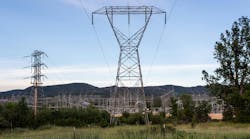The U.S. Department of Energy (DOE) has released its Pathways to Commercial Liftoff report focused on releasing the potential of advanced grid solutions.
The report demonstrates the role of commercially available advanced grid solutions, such as advanced conductors, dynamic line rating, and energy storage, in increasing the existing grid’s capacity to support upwards of 20–100 GW peak demand growth.
The technologies will improve grid reliability, resilience, and affordability for consumers. Near-term deployment of commercially available but underutilized advanced grid solutions are expected to strengthen the resilience of domestic energy systems and support the Biden-Harris Administration’s target of a net-zero emissions economy by 2050.
“The majority of the nation’s transmission and distribution lines are drastically overdue for an upgrade, which is why President Biden’s Investing in America agenda is so critical to bring the grid up to date,” said U.S Secretary of Energy Jennifer M. Granholm. “DOE’s new Innovative Grid Deployment Liftoff report outlines the existing tools that can be deployed in less than five years to modernize the nation’s power sector making it more secure and reliable to deliver cheaper, cleaner power to American consumers.”
Key findings from the report include:
- Near-term solutions are available: Multiple advanced grid solutions are commercially available to help utilities and regulators respond to grid pressures in the near-term, including rapid demand growth, reliability and resilience priorities, and new energy generation connections. These solutions include advanced transmission (e.g., advanced conductors) and grid enhancing technologies (e.g., dynamic line rating, advanced power flow control, energy storage) as well as system automation and situational awareness solutions (e.g., advanced distribution management systems, distributed energy resource management systems). These solutions can serve as a bridge while critically needed new grid infrastructure capacity continues to be built out long-term.
- The existing grid has untapped value: Deploying these technologies is expected to increase the capacity of the existing grid to support 20–100 GW of incremental peak demand when installed individually, while improving system reliability, resilience, and affordability. This capacity impact is on the order of magnitude of the 91 GW of peak demand growth that North American Electric Reliability Corporation (NERC) projects for the next decade (as of December 2023).
- Solutions are low cost and quick to deploy: Most of these solutions are less than a quarter of the cost of conventional alternatives and can be relatively quick to deploy since they make use of existing infrastructure.
- Liftoff within three to five years is possible: Liftoff will be implemented when utilities and regulators value and integrate advanced solutions as part of core grid investment, planning, and operations. Pursuing 6-12 large operational, no regrets deployments across a diverse set of utility contexts will help derisk adoption at scale and build repeatable operational and investment models. Deployments are predicted to be achieved without increasing costs to household ratepayers.
President Biden’s Investing in America agenda has announced over $13.1 billion to the nation’s transmission and distribution grid. DOE is investing in the deployment of many advanced technologies identified in the Liftoff report through the Grid Deployment Office’s Grid Resilience and Innovation Partnerships (GRIP) Program, a $10.5 billion grant program enhancing grid flexibility and improving the resilience of the power system.
DOE announced the first round of GRIP funding of about $3.5 billion and supports 58 projects in 44 states across the U.S. The funding catalyzes more than $8 billion total in public and private investments. During the first round of GRIP funding, DOE selected twelve projects including investment in grid-enhancing technologies (GETs) like dynamic line rating (DLR) or distributed energy resource management (DERMS).
A second GRIP funding opportunity is focused on creating comprehensive solutions linking grid communications systems and operations to increase resilience and reduce power outages and threats and deploying advanced technologies like distributed energy resources and battery systems to provide essential grid services.
These projects will leverage both public and private capital to de-risk efficient and equitable deployment and catalyze future private investment of advanced grid solutions to accelerating the timeline to achieving integration at speed and scale.
DOE developed its Pathways to Commercial Liftoff reports with extensive stakeholder engagement and system modeling.


